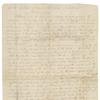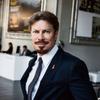Holland Art Cities: A cultural extravaganza, showcasing more art & culture per square mile than any other country on earth
- AMSTERDAM, Netherlands
- /
- June 29, 2009

In 2009 and 2010, the four largest cities in Holland are taking part in a large-scale art and cultural event called ‘Holland Art Cities .’ The top ten museums in Amsterdam, Rotterdam, The Hague and Utrecht joined forces to put together an unprecedented art spectacle; the resulting exhibits showcase a great variety of scale, range and theme. Two fantastic exhibitions will be held in the city of Rotterdam this fall, taking on the evolution of the Dutch landscape and the artful theatrics of haute couture, respectively:
Kunsthal Rotterdam: New Horizons - The Hague School and Modern Dutch Landscapes
September 12 – December 6, 2009
By the end of the nineteenth century the flat and open Dutch landscape with its famous cloudy skies and mills changed once and for all with the emergence of railways, channels and bridges. The attractive landscape, captured by various painters of The Hague School, rapidly changed. With over thirty historic photographs and an exquisite selection of The Hague School paintings from the collections of the Rijksmuseum in Amsterdam and the Neue Pinakothek Munich, this exhibit casts a surprising view into landscape painting and photography of the nineteenth century.

Industrialization
Industrialization set in relatively late in the Netherlands. It was only from 1860 onwards that industrialization and urbanization started to ingrain their marks on the Dutch landscape. Kilometers of train rails were constructed. The digging of channels and building of railroad bridges opened up various areas. The big infrastructural works altered the typically Dutch landscape with its desolate fields, vacant polders and low horizons. Instead of all this, a modern landscape, with steam driven pumping stations, broad and straight rivers and a web of railways and telegraph poles, emerged. Painting
The Hague School of painters, amongst whom Willem Roelofs, Anton Mauve, the Maris brothers and Johan Weissenbruch flourished, went outside the studio in order to capture the Dutch landscape on canvas. As subject of their paintings they chose places where the rise of industry and cities was still visible. They painted the dunes, the sea and polders in a realistic manner, and with great sense of use of light and atmosphere.
Photography
Photographers also showed a keen interest in the alterations of the landscape. Commissioned by the engineers at Rijkswaterstaat, a small group of photographers including Pieter Oosterhuis and Henri de Louw documented the examples of the constructional tour de force that emerged in the landscape. The rather formal photo series clearly show how the Dutch landscape was permanently and radically changed by the end of the nineteenth century.
Museumpark, Westzeedijk 341
Rotterdam
http://www.kunsthal.nl/en-2-Kunsthal_Rotterdam.html
Museum Boijmans van Beuningen : The Art of Fashion: Installing Allusions September 19, 2009 - January 10, 2010
With The Art of Fashion, Museum Boijmans Van Beuningen will be exploring the boundaries between fashion and art. Over the last few decades, fashion has inched closer to art in all respects. Fashion designers use installations and performances to disseminate their ideas, and influence the art world in turn. The exhibition examines the relationship between the two disciplines through the medium of new works of art by five top fashion designers.
Since the 1960s, fashion has become more than just clothes. As a reflection of concepts and ideals, fashion has become essential as a vital expression in our modern-day culture. This development aroused the interest of the art world, which saw the emergence of Pop Art and performance art in the same period. From the 1980s, art magazines have regularly published work by fashion designers, and their work can increasingly be seen in art galleries and museums.
Autonomous
For this exhibition, five designers who operate at the interface of fashion and art were specially commissions. The H+F Fashion on the Edge program allows these designers to work as artists in their own right. Viktor & Rolf’s fashion shows are extraordinarily theatrical; Hussein Chalayan’s shows resemble experimental installations. Building on her fascination with neglected parts of the body, jewelry designer Naomi Filmer creates sculptures that would not be out of place in a museum. Walter Van Beirendonck creates a vast imaginary world, while Anna-Nicole Ziesche combines clothing and film to express personal experiences.
50 works
With five new works serving as the foundation of the exhibit, associative links will be made between products by designers such as Martin Margiela, Bless and Comme des Garcons, and artists like Christophe Coppens, Nick Cave and Louise Bourgeois. The exhibition throws light on different aspects of the grey area between fashion and art: the fashion show as performance, the pattern as sculpture and the imaginary world of the fashion campaign. Some fifty works will be on display, ranging from avant-garde dresses to installations and sculptures.
Museumpark 18-20
Rotterdam
http://www.boijmans.nl/en/
For more information on Holland Art Cities, go to www.hollandartcities.com
Contact:
Barbara Veldkamp+1 917 720 1279
bveldkamp@holland.com
355 Lexington Ave.
New York, New York
bveldkamp@holland.com
+1 917 720 1279
http://www.holland.com
















